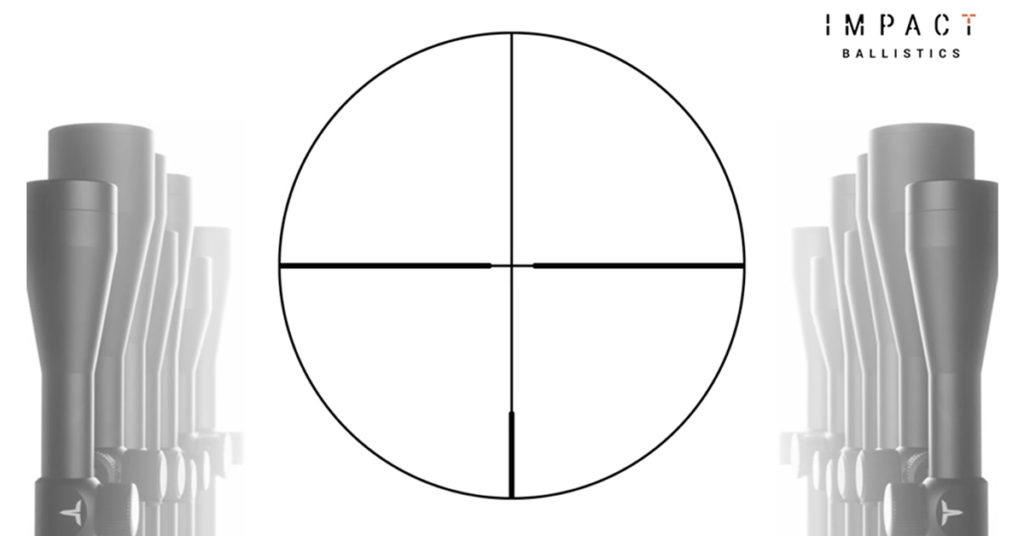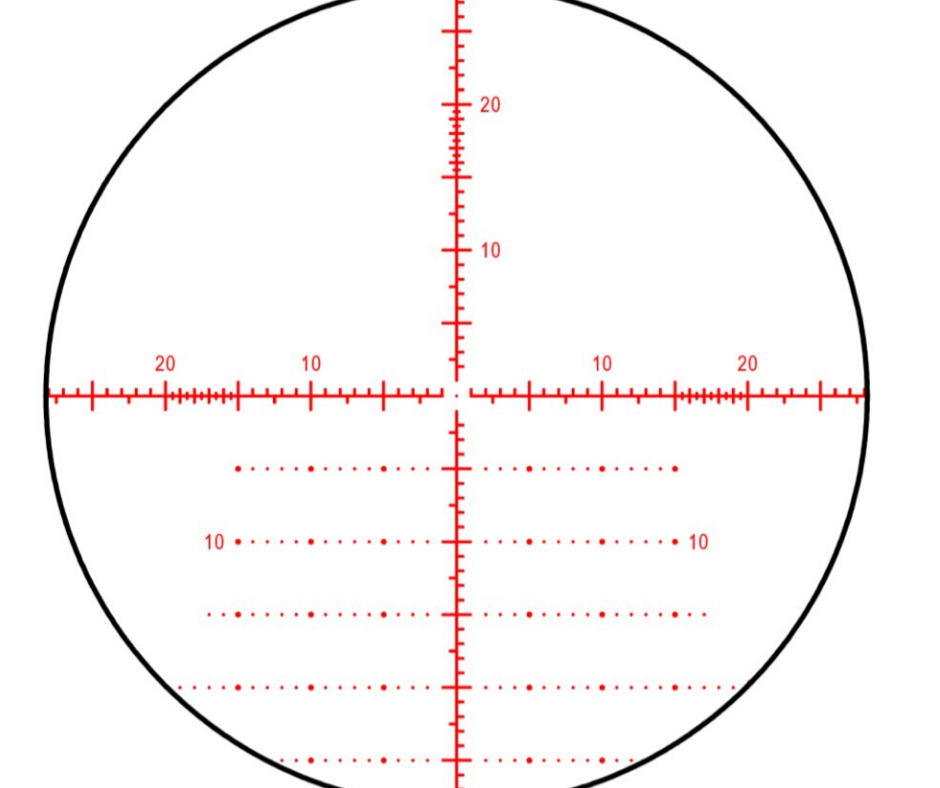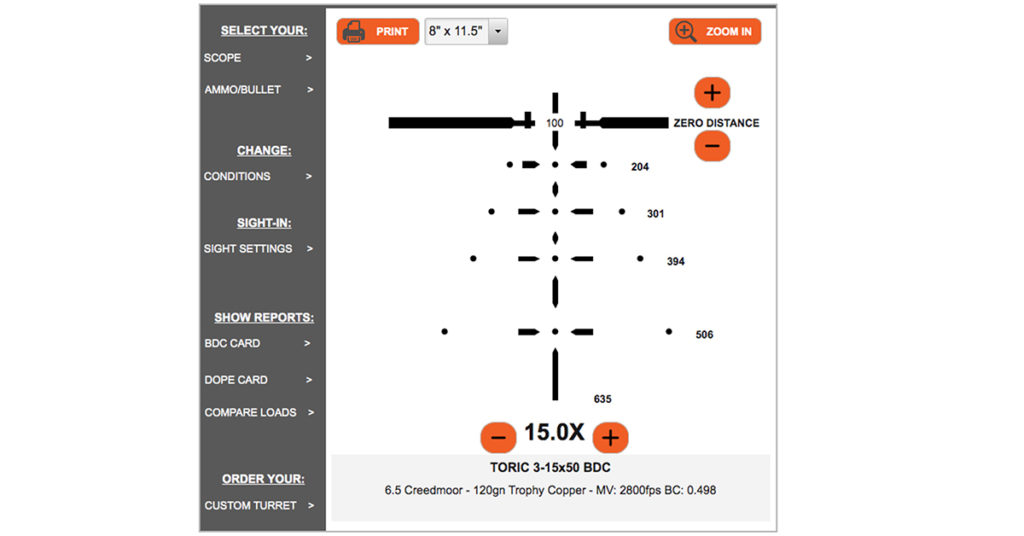A general understanding of rifle scope reticles can help significantly in the decision-making process when it comes to selecting a new scope.
A reticle is defined as a series of fine lines or fibers in the eyepiece of an optical device. Like what you see when you look into a rifle scope. For most of the rifle scope’s history (the first appeared between 1835 and 1840), the standard crosshair and plex-type reticles have been very effective.
But as shooters and shooting equipment evolves, the need for customizable reticles has increased. Understanding rifle scope reticles can greatly enhance your shooting, especially as you begin to challenge yourself with smaller targets at longer distances. It can also help significantly in the decision-making process when it comes to selecting a new scope.
Focus the Reticle
First, you must focus the reticle to your eye. Rifle scopes are not a one-size-fits-all, much like binoculars. Everyone’s vision is different, as is the way our eyes are set in our heads. To focus the reticle, look through the scope at an object that has no image, like a bare wall or the sky, so that the reticle is the sharpest image within the scope. If you tried to do this by looking at a target, your eye would have a natural tendency to look at the image first and not the reticle.
Shoulder your rifle, and looking at a blank image, simply turn the eyepiece until the reticle is razor sharp. Then you’re good to go. Jon LaCorte explains further in the video below.
Glass-Etched Versus Copper Wire Reticles
Glass-etched reticles are far better than copper wire reticles that are typically used. The reticle is actually carved into the glass. Glass etched don’t break or shift and are more precise. Can make thinner and finer lines for long-range precision.
Understanding Rifle Scope Reticles
Choosing the type of reticle for your rifle scope, and how it applies to the type of hunting or shooting you plan to use it for, is nearly as important as the scope itself. You can still find rifle scopes with your basic t-plex (crosshairs) reticle, and these are very efficient. But again, as shooters evolve, so have the reticles with the introduction of various bullet drop compensating (BDC) and mildot reticles.
Basic Reticle
The basic reticle provides your central aiming point, the crosshairs. If you’re an eastern deer hunter who doesn’t often need to make really long shots, this basic reticle is sufficient. The clean field of view you’ll find with these reticles allow shooters and hunters to get on there targets quickly.

A general understanding of rifle scope reticles can help significantly in the decision-making process when it comes to selecting a new scope.
In the case of the T-Plex rifle scope reticle, we removed the thick top vertical post. This creates a cleaner field of view that allows you to get on the target quickly.
Bullet Drop Compensating (BDC) Reticle
BDC rifle scope reticles are designed to give you true points of aim at known distances to compensate for bullet drop. In essence, you’re compensating for a horizontally fired bullet’s drop over a significant distance, due in large part to gravity. Once you find your zero, the dots will give you an exact point of aim whereas a basic reticle would require a bit of guesswork.
For example, if you’re shooting a cartridge in the neighborhood of 2,800 feet per second (fps), you’re probably going to zero the rifle at 100 yards. Each dot below center would represent 100 yards - the second dot 200 yards, the third dot 300 yards, and so on.
If you’re shooting a magnum cartridge that gets up to around 3,000 fps, then you’re zero is likely going to be at 200 yards. Each dot below center would still represent 100 yard increments; your second dot is going to start at 300 yards, the third 400, etc. The BDC reticle is useful for western hunters who’ll likely need to take longer shots.
The strategically placed ½ MOA BDC dots and pointed post bracketing system provide bullet drop compensation with a definitive aiming point that does not obscure the target, even at long range.
MIL Reticle Options
The mil or milliradian reticle is designed for the shooter who is really looking to maximize the performance of their cartridge. It is typically offered in the traditional Mildot or a Christmas Tree style reticle that provides precision and speed with hold points along both the horizontal and vertical crosshair to aid in measurement of targets or holdover compensation.
The thing to keep in mind is that each click with an MRAD scope is equal 1/10 of a Miliradian. This is equal to approximately .34” at 100 yards, meaning the MRAD adjustment is more coarse (larger value) then MOA. The benefit of MRAD adjustments, especially when shooting long range, is that your do not have to dial as much of the turret as you would with an MOA turret for long ranges.
The Christmas Tree style reticle featured in the TORIC 34mm FFP 4.5-30X56 MRAD Extreme Long Range (ELR) rifle scope, for example, provides .2 milliradian increments as well as .5 milliradian increments. These are staggered on opposite sides of the crosshair providing extreme precision as well as quick acquisition. The .04 mil floating dot center allows precise placement of the reticle and does not obscure small targets at extreme ranges.

The Glass Etched MRAD ELR reticle can be illuminated with 11 different intensity settings.
MOA Reticle Options
The Minute of Angle (MOA) style reticles are probably the most popular. Many American hunters know that one click on their rifle scope turret is equal to 1/4" at 100 yards. Since the adjustment value is finer than MRAD, you have a bit more precision, especially at closer ranges. For example, at a recent 100 club event, I was not able to zero the rifle as precisely as I would liked. My MRAD adjustments were putting the round either slightly too high or slightly too low of dead center in the ¼” bullseye. I moved to an MOA scope after that for that situation.

The TORIC 30mm FFP 4-20X50 MOA PRS rifle scope, for example is a Christmas Tree style reticle that is broken up into 1 MOA increments as well as 5 MOA increments along the horizontal Crosshair with larger hash marks indicating 5 MOA increments while the vertical cross hair provides 1 MOA hold points as well as larger 5 MOA holds.

The TORIC 30mm Series features two MOA Reticle Options: Standard MOA/MOA & MOA PRS Christmas-tree style.
Impact Ballistics App
The Impact Ballistic program allows you to match your specific cartridge to any of the TRACT rifle scope reticles, providing bullet drop compensation for long-range accuracy and precision in a simple and easy-to-use online program. Simply select your scope, caliber, and actual round of ammunition. Or select your bullet and enter your muzzle velocity if you are a handloader. The program does all the work for you by calculating the distances related to the dots or hash marks in your scopes reticle. BDC can now be calculated before you even get to the range.

The Impact Ballistic program allows you to match your specific cartridge to any of the TRACT rifle scope reticles.
The Impact program is one of the most comprehensive databases of factory ammunition and reloading comments in existence today. We are constantly updating it with the latest ammunition and ballistic data. Additional features include the ability to change your sight settings (zero/sight in versus actual target distance), entering atmospheric conditions, compare load feature, ballistic/dope charts, printable ballistic cards, windage correction tool, and much more!

We know that understanding rifle scope reticles is a pretty difficult task. There are so many tactical elements that, unless you’re a professional shooter or military, may seem foreign. If you’d like to learn more or have specific questions, we are always available via email, phone, or live chat. We always look forward to hearing from you!
- Email: [email protected]
- Phone: 631-662-7354
- LIVE Chat: tractoptics.com
